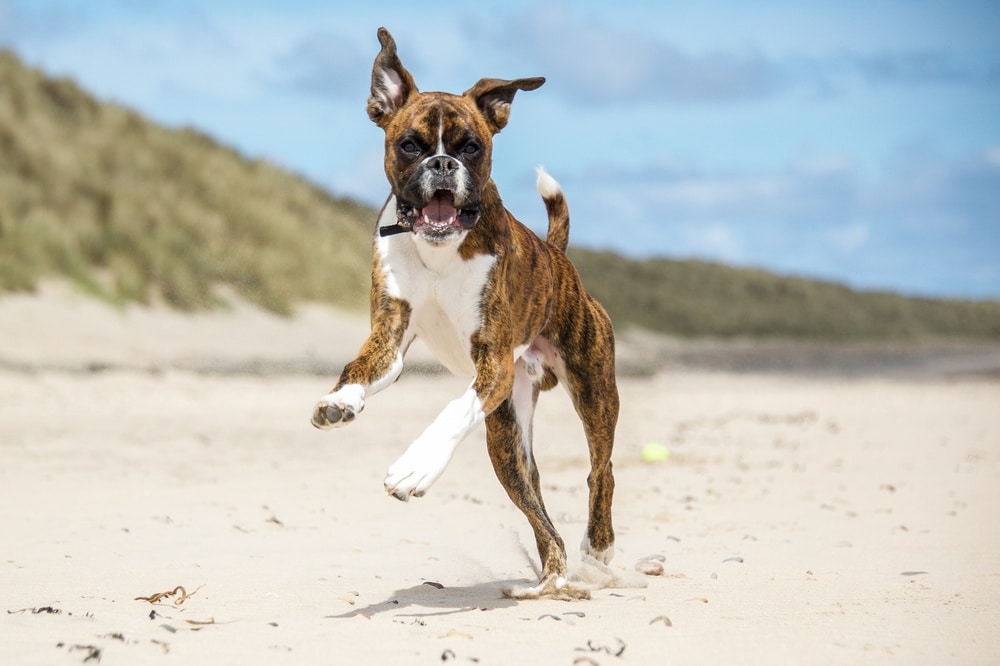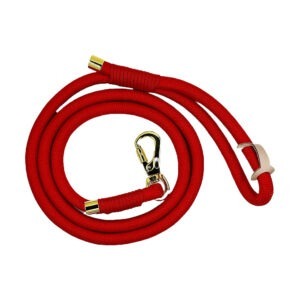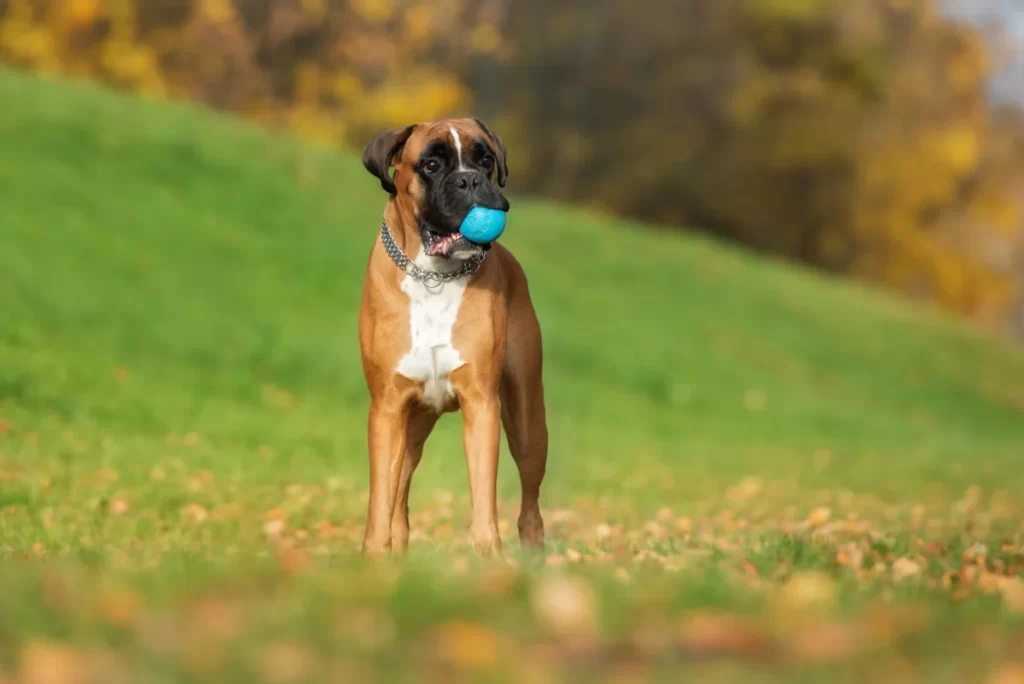The history of the Boxer breed
The Boxer breed is a fascinating dog with a rich history that spans centuries. From its ancient origins to its rise in popularity, the Boxer has captivated dog lovers around the world. In this article, we will explore the origins of the Boxer breed and the factors that have shaped its development over time.
Key Takeaways:
- The ボクサー breed has a long history that can be traced back to ancient Molossian dogs.
- Boxers were purposely bred for specific traits and characteristics, such as their strength, agility, and loyalty.
- The Boxer breed gained recognition from kennel clubs and became popular in dog shows and competitions.
- The name “Boxer” comes from the breed’s propensity to “box” with its front paws.
- Boxers played important roles during World War I and were used as messenger dogs, guard dogs, and search and rescue dogs.
An Ancient Lineage
To truly appreciate the Boxer breed as we know it today, it’s important to take a journey back in time and explore its ancient lineage. Boxers, with their impressive physical prowess and distinctive appearance, trace their roots back to the ancient Molossian dogs.
Some of our latest products...
The Boxer breed history is intricately connected to various European breeds, including the Bullenbeisser, which was a popular hunting dog in Germany. The Bullenbeisser’s strength and agility were highly valued, and it played a significant role in shaping the Boxer breed’s development.
The modern Boxer that we recognize today emerged through a careful process of deliberate breeding. Breeders sought to create a versatile working dog with great strength, agility, and a unique square-shaped head, all while maintaining a gentle and trainable temperament.
| Boxer breed characteristics | Boxer breed temperament |
|---|---|
|
|
The Boxer breed’s rich history and ancestral connections make it a fascinating subject of study for canine enthusiasts. Understanding the breed’s roots helps us appreciate its unique qualities and remarkable journey through time.
As we continue our exploration of the Boxer breed, we’ll dive deeper into early Boxer breeding practices and the deliberate selection of traits that have made this breed such a beloved companion and working dog. Stay tuned!
Breeding for Purpose
A crucial aspect of the Boxer breed’s development was the deliberate and strategic breeding practices employed to cultivate its unique traits and characteristics. Early Boxer breeding focused on selecting dogs with specific qualities to enhance the breed’s suitability for various purposes.
Improving Strength and Agility
One of the primary objectives in early Boxer breeding was to produce a dog with exceptional strength and agility. This involved careful selection of individuals with robust musculature, powerful jaws, and a well-balanced body structure for optimal athleticism.
Temperament and Trainability
Boxers were bred for not only physical prowess but also for their distinct temperament and trainability. Breeding programs prioritized dogs with a high level of intelligence, loyalty, and a willingness to please their handlers. This allowed Boxers to excel in various working roles and made them ideal as companions and family pets.
“Through selective breeding, breeders sought to create a dog that exhibited courage, discipline, and a strong work ethic while maintaining a gentle and affectionate disposition.”
The Boxer Standard
To guide breeders and ensure consistency within the Boxer breed, a breed standard was established. The standard outlined the ideal physical features and temperament traits that distinguished Boxers from other breeds. Breeders used this standard as a reference to evaluate and select breeding stock, aiming to preserve and enhance the breed’s desirable qualities.
Early Boxer breeding programs were instrumental in shaping the breed we know today. They laid the foundation for the Boxer’s distinctive attributes and contributed to its popularity as a versatile working dog and cherished companion.
The Boxer Takes the Ring
Recognized for their exceptional qualities and distinctive appearance, the Boxer breed has garnered significant recognition from kennel clubs worldwide. This recognition has propelled the Boxer breed’s popularity, particularly in the realm of dog shows and competitions.
Boxers in dog shows showcase their athleticism, grace, and elegant movement, captivating judges and audiences alike. With their strong and muscular build, coupled with their expressive faces and lively personalities, Boxers stand out in the ring, leaving a lasting impression.
“The Boxer is a breed that embodies strength, agility, and versatility. Their undeniable presence and superb showmanship make them a favorite among dog show enthusiasts.”
Boxer breed recognition has opened doors for Boxer enthusiasts, creating opportunities for breeders, owners, and handlers to showcase their beloved dogs on a grander stage. Dog shows not only serve as a platform to celebrate the breed’s exceptional qualities, but they also provide valuable insights into the breed standard and help in further refining Boxers through selective breeding.
Boxers in the Spotlight:
- Boxers have achieved notable success in prestigious dog shows such as the Westminster Kennel Club Dog Show and the Crufts Dog Show.
- They have won top honors in various categories, including Best in Show, Best of Breed, and Group placements.
Boxers’ impressive performances in the ring have solidified their place as one of the most recognized and admired breeds in the dog show world. Their ability to shine in the competitive atmosphere demonstrates their versatility and adaptability, making them a breed to be reckoned with.
With their natural showmanship, impeccable temperament, and undeniable charm, Boxers continue to dominate the ring and capture the hearts of dog show enthusiasts around the globe.
A Boxer in the Ring and the Ring in History
Did you know that the Boxer breed gets its name from its distinctive characteristic of “boxing” with its front paws? This playful behavior is one of the defining traits of Boxers and often seen as they engage in friendly sparring matches with their human companions. But the connection between boxers (the athletes) and Boxers (the dogs) goes beyond just the name.
The origin of the Boxer breed’s name can be traced back to the late 19th century when the breed was first developed in Germany. It is believed that the name “Boxer” comes from the German word “boxl,” which means “short trousers” or “buffoon.” This was a reference to the breed’s playful and clownish nature, as well as its tendency to stand on its hind legs and playfully “box” with its front paws.
While the name of the Boxer breed may have originated from their boxing-like behavior, the historical connections between boxers and Boxers run even deeper. Boxers (the athletes) have a long and storied history, dating back to ancient Greece and Rome, where they fought in organized competitions called boxing matches.
Boxing as a sport has evolved significantly over the centuries, and it has always attracted a dedicated and passionate fan base. The popularity of boxing has undoubtedly influenced the perception and appreciation of the Boxer breed, with its strong, athletic physique and powerful yet agile movements.
Boxers in History: A Symbol of Strength and Resilience
“Boxers (the dogs) possess a remarkable combination of physical strength, agility, and endurance, making them well-suited for various tasks and roles throughout history.”
Throughout history, Boxers (the dogs) have been admired for their physical prowess, intelligence, and loyalty. They were often used in various roles, including hunting, guarding, and even serving in the military.
In World War I, Boxers played a vital role as war dogs, serving as messenger dogs, guard dogs, and search and rescue dogs. Their strength, bravery, and unwavering dedication made them invaluable assets on the battlefield.
Fast forward to the present day, and Boxers continue to be cherished as beloved family pets and loyal companions. Their playful and affectionate nature, combined with their protective instincts, make them excellent choices for active individuals and families.
So, the next time you see a Boxer engaging in their unique boxing-like behavior, remember the historical connections between boxers (the athletes) and Boxers (the dogs). It’s a testament to the breed’s enduring legacy, strength, and the close bond shared between humans and Boxers.
| Boxing and Boxers | Boxer Breed Name Origin |
|---|---|
| Boxing is a popular sport that has influenced the perception and appreciation of the Boxer breed. | The Boxer breed’s name is derived from the dog’s tendency to “box” with its front paws. |
| Boxers (the athletes) have a long and storied history, dating back to ancient Greece and Rome. | The name “Boxer” comes from the German word “boxl,” meaning “short trousers” or “buffoon.” |
| Boxers (the dogs) possess physical strength, agility, and endurance, making them well-suited for various roles. | The historical connections between boxers and Boxers highlight the breed’s enduring legacy and close bond with humans. |
World War Heroes
During World War I, Boxers played a crucial role in serving their countries. These brave and loyal dogs were utilized in various capacities, showcasing their intelligence, agility, and unwavering dedication.
One of the essential roles Boxers performed during the war was serving as messenger dogs. In dangerous and chaotic environments, where communication lines were disrupted, Boxers proved invaluable in delivering vital messages between the frontlines and command centers.
Boxers also excelled as guard dogs. With their strong protective instincts and imposing presence, they provided a sense of security to soldiers and military installations. These courageous dogs remained vigilant, detecting and alerting their human counterparts to potential threats, contributing significantly to the safety and defense of military personnel and equipment.
Furthermore, Boxers were often employed as search and rescue dogs. In the aftermath of battles or catastrophic events, these agile and determined dogs were deployed to locate injured soldiers, leading them to safety. Their keen sense of smell and ability to navigate through debris made them invaluable in saving lives and providing comfort to the wounded.
Overall, Boxers demonstrated their extraordinary abilities and unwavering loyalty during World War I. Their exceptional contributions as messenger dogs, guard dogs, and search and rescue dogs solidified their place as true heroes on the battlefield.
The Heroic Role of War Dogs
Boxers were not the only dogs employed in World War I. War dogs of various breeds fulfilled critical roles, assisting soldiers in multiple ways. These war dogs were not only companions but also partners in the fight, providing much-needed support and boosting morale among troops.
Throughout history, the use of war dogs has been prevalent. From ancient civilizations to modern conflicts, their unique skills and unwavering loyalty have made them indispensable to military efforts.
“The loyalty and dedication exhibited by war dogs like the Boxer during World War I is truly remarkable. These brave canines showed unwavering courage and played a pivotal role in supporting our soldiers on the frontlines.”
Next, we will explore the surge in Boxer popularity, particularly in the United States, during the mid-20th century, and the factors that contributed to its widespread appeal.
Boxer Popularity Soars
During the mid-20th century, the Boxer breed experienced a remarkable surge in popularity, particularly in the United States. This newfound admiration can be attributed to various factors that contributed to its widespread appeal.
Athletic and Versatile
No stranger to the limelight, the Boxer’s athletic abilities and versatility captured the hearts of dog enthusiasts across the nation. With their well-muscled bodies and natural agility, Boxers excelled in a wide range of activities, including obedience trials, tracking, and even as therapy dogs.
A Loyal and Devoted Companion
Boxers’ innate loyal and affectionate nature endeared them to countless families. Known for forming strong bonds with their owners, Boxers became cherished members of households across America. Their gentle and patient demeanor around children further solidified their reputation as an excellent family pet.
“In all of the dogs I have trained and loved throughout my career, Boxers have a special place in my heart. Their loyalty and unyielding devotion is unmatched.”
Boxers in Popular Culture
Boxers’ pop culture presence also played a significant role in their rising popularity. From movies and television shows featuring lovable Boxer characters to high-profile celebrity endorsements, the breed became a recognizable symbol of loyalty and companionship.
The Boxer Today
The modern Boxer breed is known for its distinctive physical characteristics, temperament, and its suitability as a companion dog. Here, we’ll explore the key attributes that make Boxers so beloved by dog enthusiasts around the world.
体格的特徴
Boxers are medium-sized dogs with a strong and muscular build. They have a square-shaped head with a striking underbite, giving them their signature expression. Their eyes are dark and expressive, and their ears can be naturally floppy or cropped to stand erect. With a short and sleek coat, Boxers come in various colors, including brindle, fawn, and white markings.
One of the most notable physical attributes of Boxers is their robust and athletic physique. They have a deep chest, a broad and sturdy back, and well-developed hindquarters, allowing them to excel in agility and endurance.
気質
Boxers are renowned for their friendly and playful nature. They are known to be loyal and protective of their family, making them excellent watch dogs. Despite their robust appearance, Boxers are gentle and patient with children, often displaying a natural affinity for younger members of the family.
Intelligent and eager to please, Boxers are highly trainable and respond well to positive reinforcement. Their exuberance and spirited nature make them excellent companions for active individuals or families who enjoy outdoor activities and exercise.
“Boxers are not only beautiful and athletic, but they also have a remarkable personality. Their combination of strength, loyalty, and affectionate nature makes them truly special.” – Dog enthusiast
Companion Dogs
Boxers thrive in human companionship and are known for their ability to form strong bonds with their owners. They are social dogs that require consistent interaction and mental stimulation to prevent boredom. Boxers are happiest when they are part of a loving and active household that provides them with plenty of exercise, playtime, and opportunities to engage with their human family members.
Due to their loyal and protective nature, Boxers can serve as excellent family pets and dedicated guardians. However, proper socialization from an early age is crucial to ensure they develop into well-mannered and well-adjusted adults.
In Summary
The modern Boxer breed boasts a unique combination of physical prowess, friendly temperament, and devotion to their human companions. Whether as a loyal family pet, a working dog, or a show competitor, Boxers continue to capture the hearts of dog lovers worldwide.
結論
In conclusion, the Boxer breed boasts a rich and fascinating history that dates back to ancient times. Originating from ancient Molossian dogs, the Boxer has evolved through intentional breeding practices to become the beloved breed we know today.
With its unique name derived from its propensity to “box” with its front paws, the Boxer has not only left its mark in the dog world but also made connections to the sport of boxing itself.
Throughout history, Boxers have proven their valor and loyalty, serving as heroes during World War I and winning the hearts of dog enthusiasts, particularly in the United States. Today, the Boxer remains a popular breed cherished for its distinctive physical characteristics and friendly temperament, making it an ideal companion for many.
よくある質問
What is the history of the Boxer breed?
The history of the Boxer breed dates back to ancient times. These dogs have an ancient lineage that can be traced back to Molossian dogs, which were powerful canines known for their strength and loyalty. Over time, the Boxer breed was developed through intentional breeding practices to create the distinctive traits and characteristics that we see today.
Where do Boxers come from?
Boxers originate from Germany, where they were first bred in the late 19th century. They were developed by crossing the Bullenbeisser, a now-extinct breed of hunting dog, with various European breeds such as the Bulldog and the Mastiff. The goal was to create a versatile working dog that was strong, agile, and had a fierce protective instinct.
How was the Boxer breed developed?
The Boxer breed was developed through careful and purposeful breeding. Breeders focused on selecting dogs with specific traits, such as strength, intelligence, and a gentle temperament. Through generations of selective breeding, the Boxer breed was refined and standardized to maintain its desired characteristics and ensure consistency in its appearance and behavior.
When did the Boxer breed gain recognition?
The Boxer breed gained recognition by various kennel clubs in the early 20th century. The first official Boxer breed club, known as the Deutscher Boxer-Club, was established in Germany in 1895. Since then, Boxers have become increasingly popular both as working dogs and as show dogs.
What is the origin of the Boxer breed’s name?
The Boxer breed’s name is said to come from their unique behavior of “boxing” or playfully batting at objects with their front paws. This behavior resembles a boxer (the athlete) using their hands to spar or fight. The name “Boxer” was given to the breed to capture this distinctive characteristic.
Did Boxers have a role in World War I?
Yes, Boxers played a significant role in World War I. They were utilized as messenger dogs, guard dogs, and search and rescue dogs on the battlefield. Their loyalty, intelligence, and adaptability made them highly valued assets, and their contributions during the war further enhanced their reputation as versatile working dogs.
How did Boxers gain popularity in the United States?
Boxers gained popularity in the United States during the mid-20th century. Their appeal was largely due to their loyal and affectionate nature, as well as their versatility as both working dogs and family companions. They quickly captured the hearts of American dog enthusiasts, leading to a surge in their popularity across the country.
What are the characteristics and temperament of Boxers?
Boxers are medium-sized dogs with strong and muscular bodies. They have a distinctive square-shaped head, a powerful jaw, and a short coat. They are known for their high energy levels, intelligence, and playful nature. Boxers are loyal and protective of their families, making them excellent guard dogs. They are also friendly and gentle, making them great companions for both individuals and families.
Can Boxers be suitable companion dogs?
Yes, Boxers can be wonderful companion dogs. They are known for their affectionate and sociable nature, and they thrive when they are a part of a loving family environment. However, due to their energetic and active nature, they require regular physical exercise and mental stimulation to be happy and balanced. Proper training and socialization from an early age are essential to ensure they become well-behaved and obedient companions.







